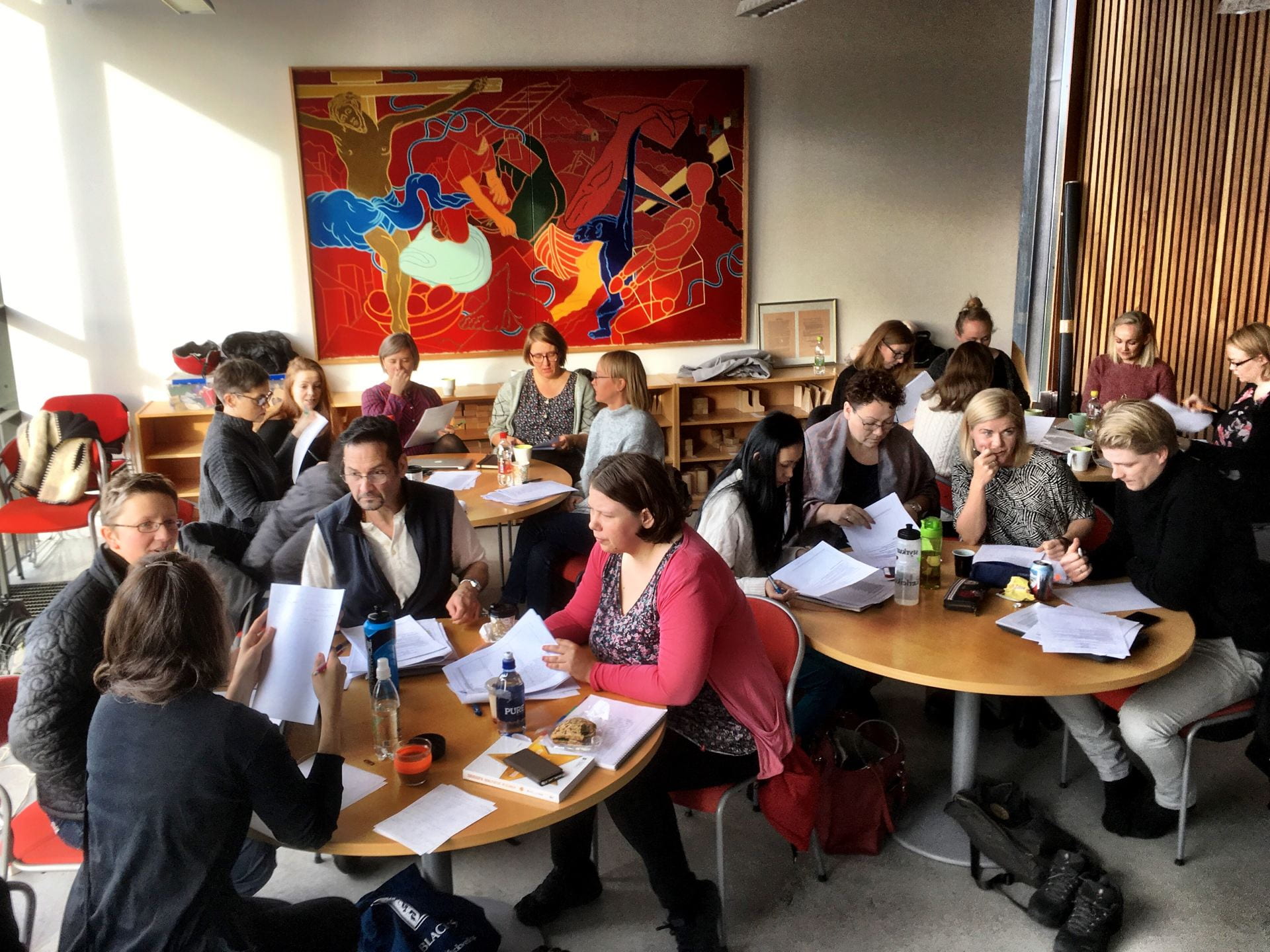
Doing Reflexive TA

Image: Lisa Trainor

The Reflexive TA process
Reflexive TA involves a reflexive, recursive engagement with the dataset, to produce a robust analysis.
We have outlined a six-phase process to facilitate the learning of, and doing of reflexive thematic analysis. These phases do not prescribe a rigid process you must follow. They are tool to guide you in systematically and robustly exploring, interpreting, and reporting a pattern-based analysis from your dataset. Qualitative analysis is a skilled, situated, subjective process, that exists at the intersection of the researcher, the dataset, and the various contexts of interpretation. It is not the outcome of strictly following set phases or ‘rules’.
Six phases for analysis
Note that the names for these phases have changed since first articulated in 2006.
- Familiarising yourself with the dataset: This phase involves reading and re-reading the data, to become immersed and intimately familiar with its content, and making notes on your initial analytic observations and insights, both in relation to each individual data item (e.g. an interview transcript) and in relation to the entire dataset.
- Coding: This phase involves generating succinct labels (codes!) that capture and evoke important features of the data that might be relevant to addressing the research question. It involves coding the entire dataset, with two or more rounds of coding, and after that, collating all the codes and all relevant data extracts, together for later stages of analysis.
- Generating initial themes: This phase involves examining the codes and collated data to begin to develop significant broader patterns of meaning (potential themes). It then involves collating data relevant to each candidate theme, so that you can work with the data and review the viability of each candidate theme.
- Developing and reviewing themes: This phase involves checking the candidate themes against the coded data and the entire dataset, to determine that they tell a convincing story of the data, and one that addresses the research question. In this phase, themes are further developed, which sometimes involves them being split, combined, or discarded. In our TA approach, themes are defined as pattern of shared meaning underpinned by a central concept or idea.
- Refining, defining and naming themes: This phase involves developing a detailed analysis of each theme, working out the scope and focus of each theme, determining the ‘story’ of each. It also involves deciding on an informative name for each theme.
- Writing up: This final phase involves weaving together the analytic narrative and data extracts, and contextualising the analysis in relation to existing literature.
Although these phases are sequential, and each phase builds on the previous, analysis is typically a recursive process, with movement back and forth between different phases. As noted above, these phases and the practices they capture are not rules to follow rigidly, but rather a series of conceptual and practice oriented ‘tools’ that guides the analysis to facilitate a rigorous process of data interrogation and engagement. With more experience (and smaller datasets), the analytic process can blur some of these phases together.
We encourage you to use resources we have listed to help you engage in reflexivity for best practice and to consider issues of design/conceptualisation and quality throughout your analytic process.